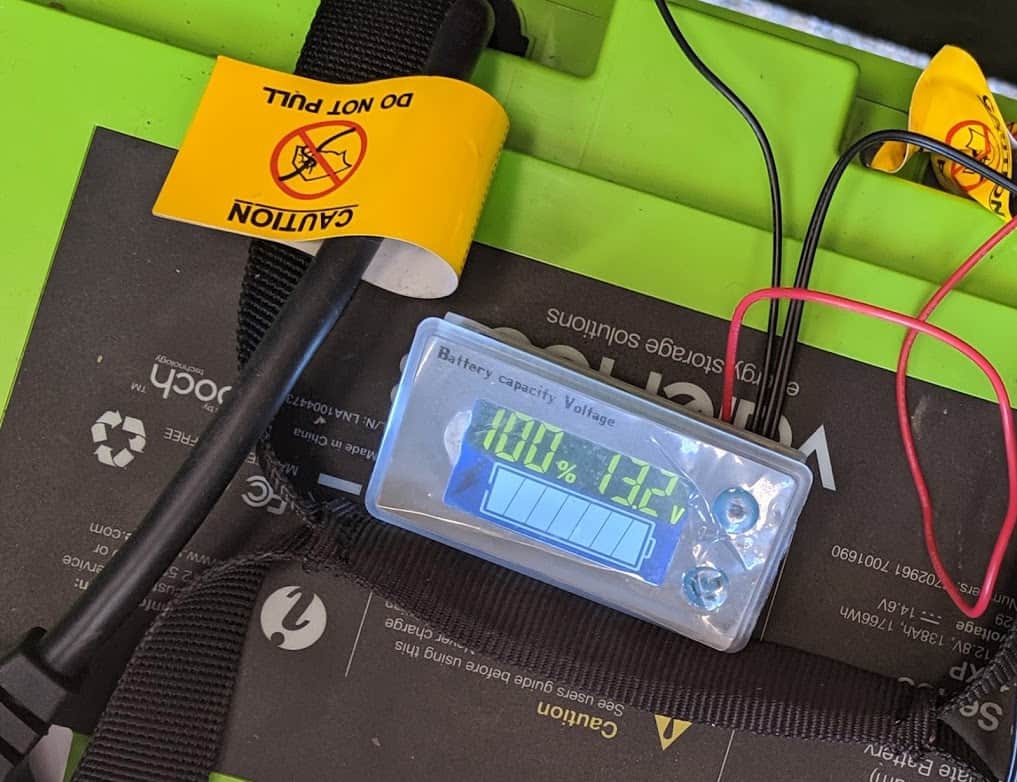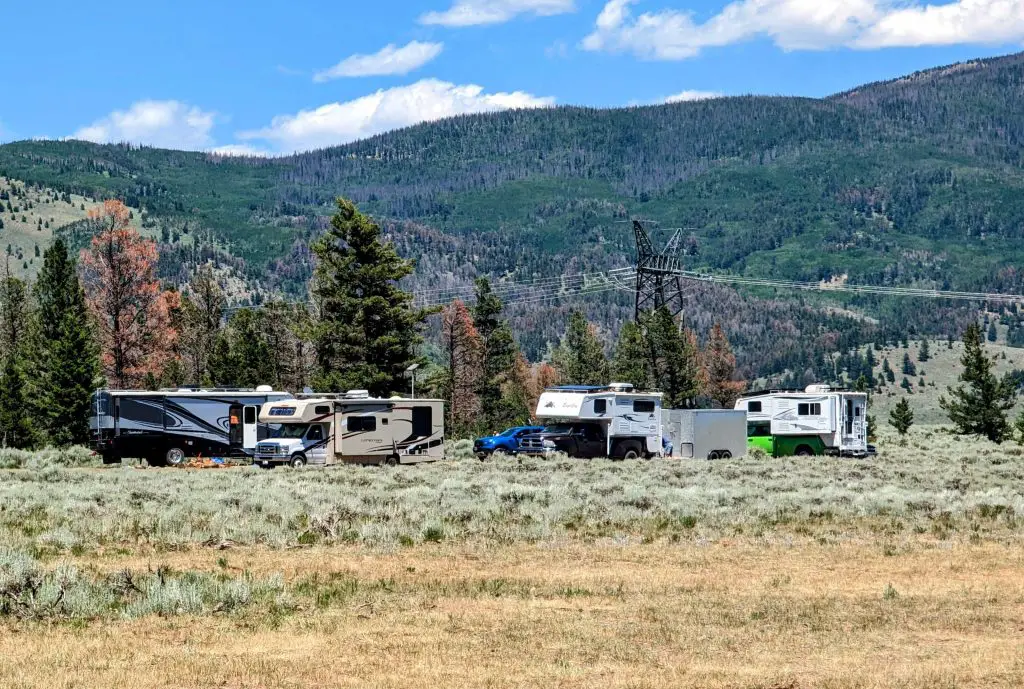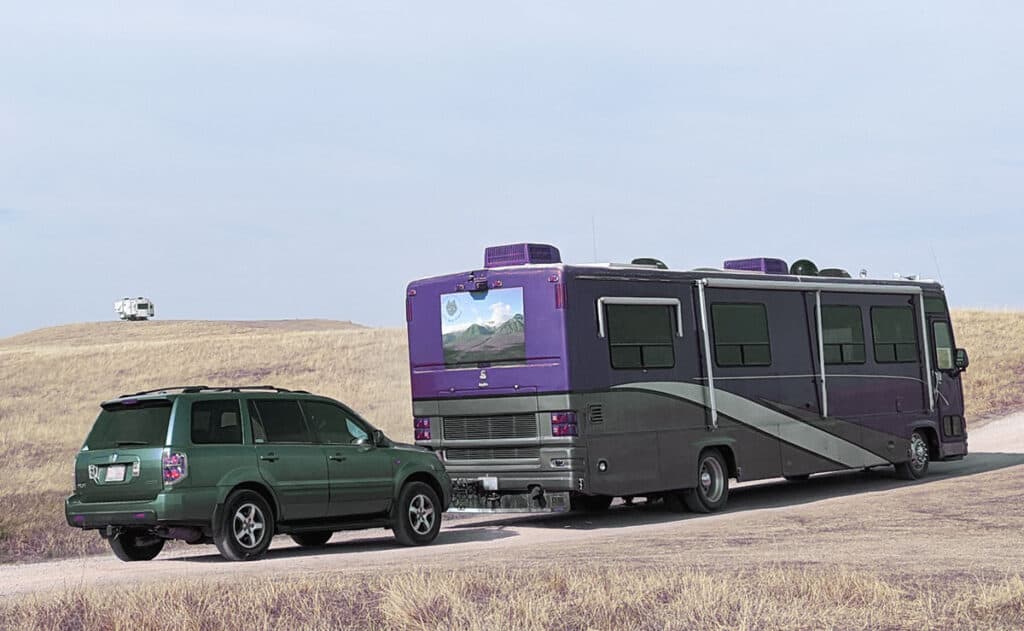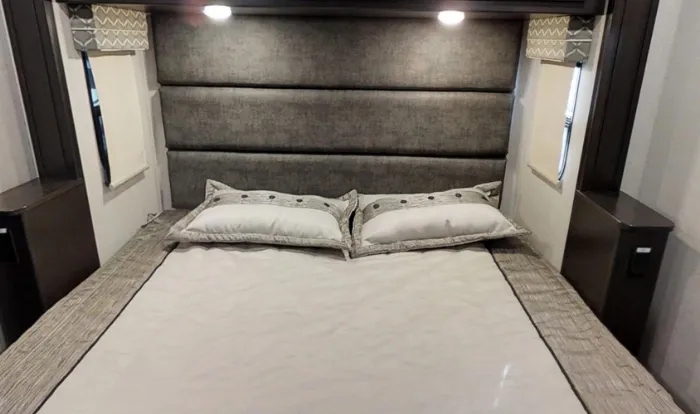Last Updated on March 7, 2024

Key Takeaways:
- RV Battery Systems: Consist of a 120-volt AC system for major appliances and a 12-volt DC system for lights and accessories.
- Battery Banks: Created by connecting two or more batteries in series or parallel to increase voltage or amps as needed.
- Maintenance: Regularly check and maintain electrolyte levels, clean terminals, and avoid letting batteries discharge too low.
- Storage: Consider removing batteries during storage to prevent freezing and maintain charge levels, or disconnect and charge periodically.
- Battery Monitors: Monitor battery status and energy flow to ensure proper usage and maintenance.
- Installation: Disconnect power sources, clean terminals, install new battery, and test functionality.
- Charging Methods: Charge batteries using converters, generators, alternators, solar power, or wind power.
- Cost: RV battery costs vary based on type, with lead-acid batteries costing less upfront but lithium batteries offering longer lifespan and better efficiency in the long run.
- Types of Batteries: Choose between deep-cycle lead-acid batteries or lithium batteries, each with its own pros and cons.
The RV battery system is an essential component of your RV’s internal setup. It provides power to everything electric, from your HVAC system to your refrigerator. As an RV owner, it is important to understand how your RV battery works and how to manage it.
RV Electric systems are made up of two distinct systems.
A 120-volt AC system is more powerful and is used to run major appliances in the RV. You need to be hooked up to shore power or running a generator that will generate enough power to run such devices.
A 12-volt DC system that charges when you’re hooked up into power, when you are running your generator or when you’re actually driving your motorhome. Trailers, Fifth Wheels, or Truck Campers don’t have this feature, they need to be set up separately to have their batteries charged while you are driving. Motorhomes usually come this way. This smaller 12V battery system powers things like overhead fans, interior lights, slides, and the water system, and can be used while the RV isn’t plugged into power.
Now that you have a basic understanding of what the RV battery system consists of, there are important questions to consider.
1. What is an RV Battery Bank?
A battery bank is created when you join two or more batteries together. This increases voltage or amps when you need more power. There are two ways to create a battery bank.
RV batteries in series: Joining RV batteries in series lets you keep the same amperage but adds extra voltage. If you were to connect two 6-volt RV batteries in series, you get a total of 12 volts, but the amps remain unchanged. A jumper wire is used to connect RV batteries with the negative terminal of one battery connected to the positive terminal of the other battery.
RV batteries in parallel: A parallel RV battery bank increases the current but allows the voltage to stay the same. Joining two 6-volt RV batteries in parallel gives you 6 volts, but the amps will now be increased. Parallel connections are created by connecting two positive terminals to two negative terminals. They can then be connected to your application and will drain equally when in use.
A series-parallel bank can be used to increase voltage and amps. The bank requires a minimum of four batteries but you can join as many batteries as you want. You will want to have a battery box to keep your separate cells safe and secure. Two sets of batteries connected in parallel can be joined together to form a series power bank.
No products found.
2. How Do I Maintain an RV Battery?
Maintaining your RV batteries will depend on what type of batteries you have. As an example, lithium batteries require very little upkeep. Other types of batteries will have higher maintenance needs. Here are some basics of RV battery maintenance:
Maintain electrolyte levels in flooded-cell batteries. Flooded-cell batteries lose water over time and this needs to be replaced. Use distilled water to help reduce the chance of sulfation and plan to check the batteries at least once per month. Additionally, make sure that they are fully charged before performing the necessary maintenance.
Clean battery terminals to remove any corrosion that has built up. A mixture of one cup of baking soda to a gallon of water will work or you can use a commercial battery contact cleaning product. A toothbrush works well for scrubbing.
Avoid letting your batteries get too low in charge as this can increase sulfation. When your batteries fall below 80% or 12.4 volts, sulfation can begin, so always recharge your batteries after using them.
Plan to recharge your batteries often, but also keep in mind that overcharging and hot temperatures have negative effects on batteries over time.
3. How Should I Store My RV Battery?
Chances are that your RV will be stored away for a few months during the year. Batteries naturally discharge over time, which will affect the life of your battery. Freezing kills flooded cell batteries, but a charged battery cannot freeze. AGM batteries resist damage from freezing better than flooded cell batteries, but it is important to prevent it from happening.
- Consider removing your batteries from the RV when it is in storage and taking them home with you. Check the voltage every month and charge anytime it falls below 80%. If you are not able to remove the batteries, you will need to take a few precautions to keep your batteries alive.
- Disconnect your house batteries. Appliances such as radios, refrigerators, smoke detectors, and propane detectors consume tiny amounts of power over time which can drain your battery.
- Charge the batteries as they naturally discharge.
- Converters should not be left plugged in so as to charge the RV battery. This is a guaranteed way of drying out the RV battery quickly.
- Check on your batteries periodically while in storage. Once a month should be sufficient.
3. What Are Battery Monitors?
A battery monitor helps you determine the true state of charge of an RV battery. An RV battery monitor can measure the energy that’s flowing into and out of your battery as well as its state of charge or discharge. There are many different kinds of RV battery monitors and most will include an LCD display that reads out all the critical data that you need to know. It is worth investing in an RV battery monitor to keep track of your batteries at all times.
4. How Do I Install an RV battery?
To install an RV battery, you will first turn off all of the objects that draw power from the battery, including minor appliances like overhead lights. Make a note of where the current battery is located, and then disconnect the cables. The negative cable should be disconnected first. Next, you need to clean the cables and the new battery’s terminals. Insert the battery and reattach the cables. Install any hold-down hardware that accompanies the battery, and then give it a test run.
5. How Do I Charge an RV Battery?
When your RV is connected to an electric outlet, the batteries charge. An RV Converter/Charger that converts the power from the grid into 12-volt DC and then channels this to the adapter is fitted into every RV.
Batteries also charge when the motor of your motorhome is running. One option is to keep your RV plugged in all the time but this will drain your wet-cell batteries’ water levels more quickly. Use a battery monitor to best determine when the batteries need to be charged. (Please note only motorhomes have this built-in usually)
An RV battery usually charges through the use of a converter which takes AC power and converts this power to DC power. It can also be charged directly through the tow vehicle’s alternator, solar power, or even wind power.
Using A Converter: There are a few ways in which a battery can be charged using the converter. The RV could be hooked up to the electrical grid via an outlet at a campground or it can be hooked up to the grid at home through a 15 or 20 amp power outlet. An RV usually has a 30 or 50 amp hook-up which allows it to be powered by the electrical grid, otherwise known as shore power. Most small trailers and RVs will have a 30 amp hookup while larger ones with two or more AC units will have a 50 amp hookup. Once hooked up to shore power, the battery will automatically begin to charge and run your electrical appliances at the same time. Power is sent through the converter, which then sends power to the 12-volt batteries as well as to the 120 VAC breaker panel. The breaker panel will connect to all the AC outlets while the battery will hookup to any DC appliances. If your battery were to completely die, you could still run all of your appliances off of AC outlets with the exception of the DC only appliances.
Using A Generator: Generators can also be used to charge your RV battery. Propane, diesel, and gas generators are popular and are often hooked up just like shore power. The generator plugs into the RV, which will run your AC appliances directly and charge your battery at the same time. Your battery would still be able to power your DC lights while charging in this instance. You can charge your batteries faster if you use a battery charger, put the clamps on your batteries, and plug it in your electrical outlet while running your generator.
Using DC Power: There are a few ways in which you can charge your battery without having to go through the converter first. Just remember that these charging methods will not simultaneously run AC appliances. In this case, your battery would end up powering both your AC and DC appliances and lights while being charged at the same time. Powering AC appliances through a battery and an inverter is less efficient than powering them directly through shore power.
Using An Alternator: Vehicles charge their own 12-volt batteries using an alternator and this can also be done for an RV battery. An alternator works by converting mechanical energy into electrical energy. The mechanical energy is generated when the engine starts and a belt rotates the alternator. Charging your batteries with an alternator is a great option for extended road trips, but not a good option if you plan to stay in one place for a long time. You would have to idle your vehicle to charge your batteries which is inefficient.
Using Solar Power: Solar energy is becoming increasingly more popular among RVers. A solar panel connects to an amp controller which then connects to the battery. The amp controller helps to keep the battery from overcharging. You can choose from a pulse width modulation charge (PWM) controller or a maximum power point tracking (MPPT) charge controller. An MPPT charge controller is the more efficient option but will cost more upfront. If you want to set up your own solar equipment and don’t know where to start, get an RV Solar Consultation!
Using Wind Power: In some rare cases, people have used wind turbines to charge their cRV battery. Charging a battery from wind power works in the same way that charging a battery from solar power does. This time you have a wind turbine that connects to a charge controller which then sends energy to your battery. Some people think to use wind turbines while driving as it gives easy access to moving air. But, this is not efficient, safe, or legal.
6. How much does an RV battery cost?
The cost of RV batteries varies according to which kind of battery you get. As an example, a single, 12-volt, regular wet-cell lead-acid battery can cost several hundred dollars and a lithium battery setup can cost you somewhere in the thousands. Lithium batteries offer extended lifespans which means their cost-effectiveness is actually better in the long run
7. What is the Best RV Battery?
There are a variety of different RV battery choices and there will be pros and cons to each. You can always ask other campers for their recommendations. Here are the two most common choices:
Deep-cycle batteries: These are a type of lead-acid battery, and are similar to the one you can find in boats. It uses similar chemistry to generate and maintain power as car batteries do but produces a steady amount of current over a longer period of time. Deep cycle batteries come in a variety of subtypes, including flooded wet-cell batteries, absorbed glass mat (AGM) batteries, and gel-type batteries.
Lithium batteries: These are an alternative to traditional lead-acid batteries. Many campers who set up their RVs for solar power generation upgrade to lithium batteries. Although this is more expensive, there are a variety of benefits over other types. They are lighter in weight, smaller, and don’t require the same kind of tedious maintenance as other types of batteries. Lithium batteries also have a much longer lifespan and are typically rated for 5,000 cycles as opposed to the 400 or so cycles most lead-acid batteries get.
Last update on 2024-04-24 / Affiliate links / Images from Amazon Product Advertising API








